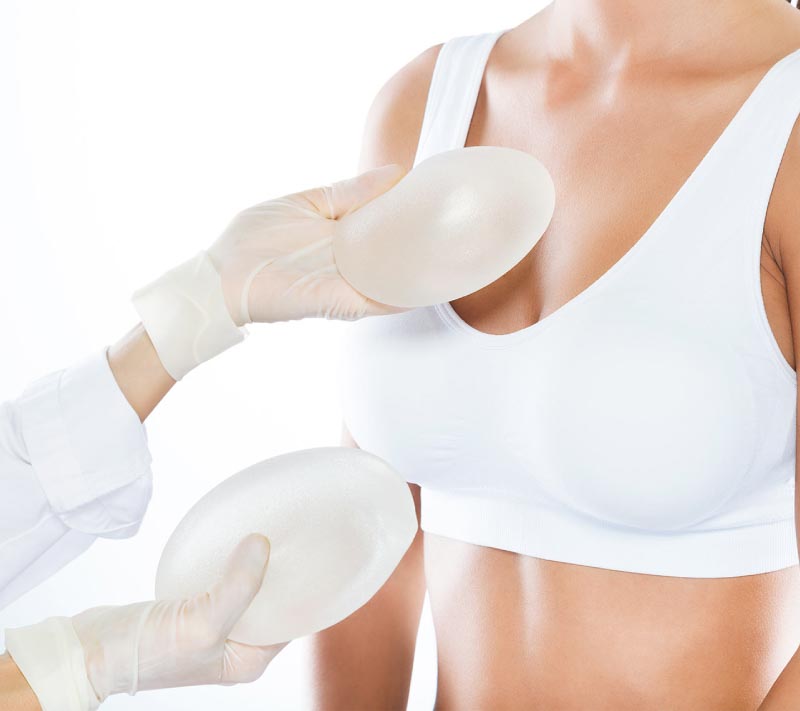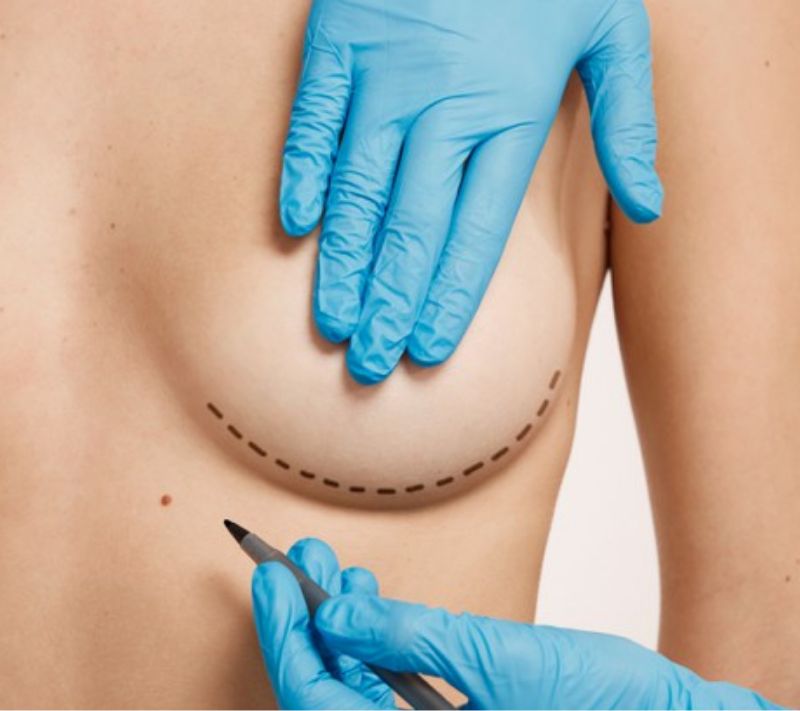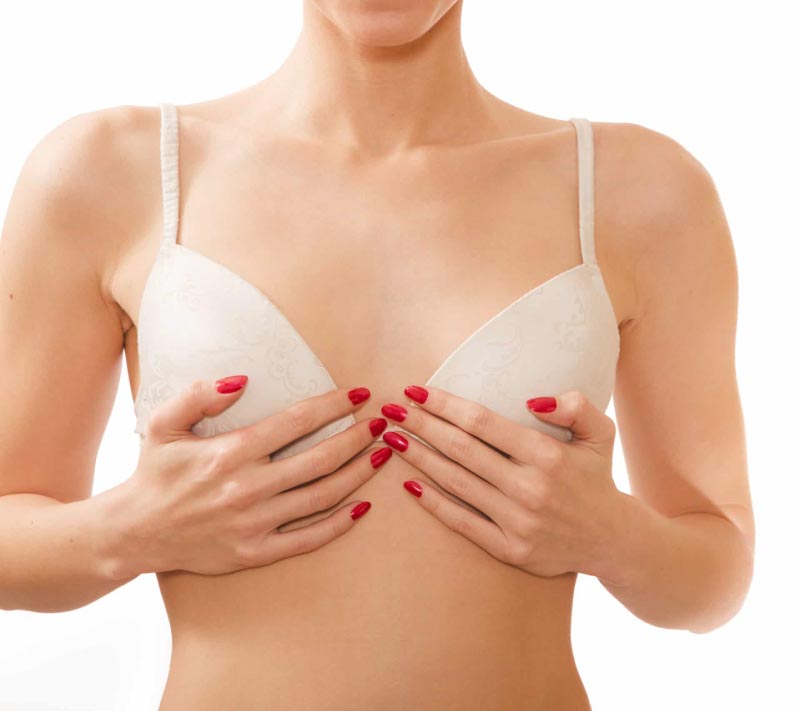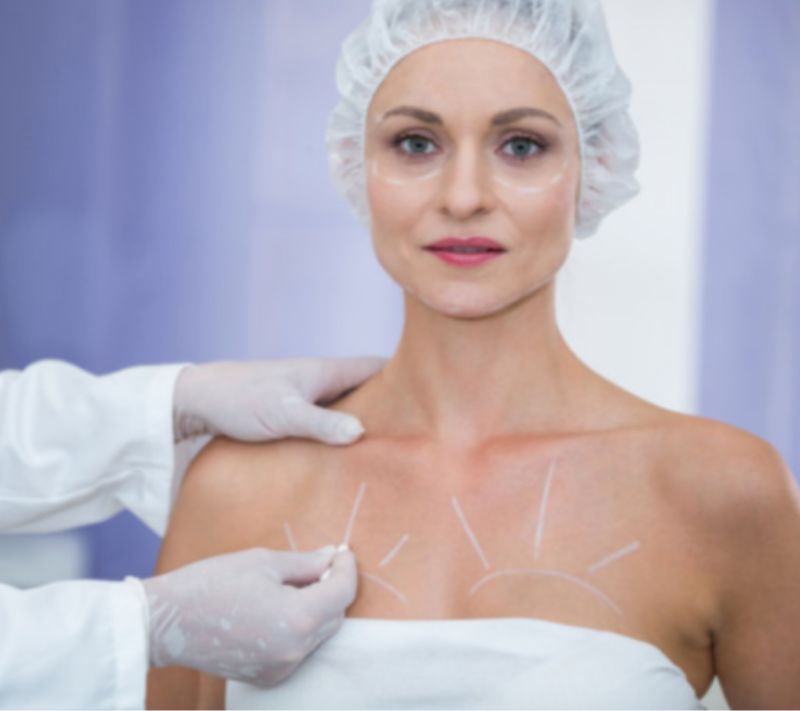
Breast Augmentation
Breast augmentation enhances the breasts with breast implants. There are many types of breast implants to choose from, and working with a skilled and reputable plastic surgeon who specializes in breast augmentation is the best way to get the results you desire. Whether you want to enlarge the breasts, improve the shape, achieve a higher breast profile projection, ensure breast symmetry, or restore volume that has been lost with age or post-partum, breast augmentation provides immediate and beautiful results.
Breast augmentation has been the most popular plastic surgery around the globe for several years, and also boasts one of the highest patient satisfaction rates of all cosmetic surgery options. In addition to improving the aesthetic of the breasts so that they look more youthful and feminine, breast implants have also been linked to an increase in self-esteem and self-confidence.
Breast Implant Materials: Silicone or Saline
Those considering breast implants enjoy one of the most individualized of experiences. Nearly every aspect of breast implants can (and should) be customized just for you. One of the first decisions to make is whether you want silicone or saline implants. Silicone and saline breast implants are both popular, and there are some specifications within these two primary types.
Silicone implants are pre-filled with silicone gel. They maintain their shape in the small chance of a rupture. In the U.S. we have two types of implants available for use – saline and silicone. Saline implants have been available for use for several decades, while silicone implants were re-approved for general use by the FDA (Food and Drug Administration) in November of 2006.
The FDA approved silicone implants after vigorous research and testing by independent panels of experts in the field. The FDA recommends that women be over the age of 22 to receive silicone implants, although they may be used at a younger age for reconstructive or symmetry purposes.
Silicone implants have different cohesive levels, the grading of which increases as the cohesive level increases. The firmness of the implants increases slightly as the cohesive level (I, II, III) increases. This, in turn, decreases the chance that you may see or feel “rippling” in your breast following augmentation. All of the implants are referred to as “gummy bear” implants, which became available in the U.S. in May of 2013.
Saline implants are inserted first and then filled with a natural saltwater solution (also called saline solution). Both silicone and saline implants have the same outer-shell material. In the rare chance that a saline implant ruptures, it will empty out and the saline will be safely and naturally absorbed by the body. Many patients consider this a benefit, as this deflation will be a clear sign that the implant needs to be evaluated by a medical professional.
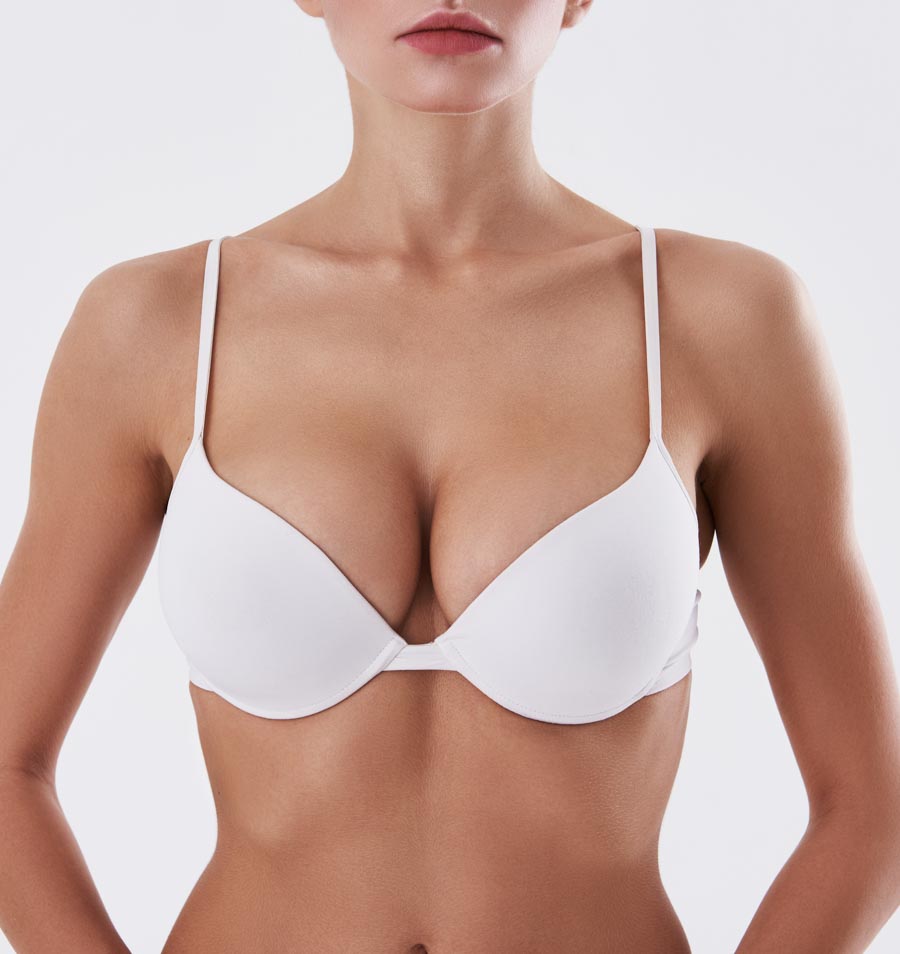
Breast Implant Size and Shape
Size is one of the first factors many patients start thinking about. Breast implants are measured in ccs, though most patients prefer to talk to their surgeon in terms of cup size. A reputable surgeon can easily “translate” your desires and goals into accurate ccs.
Breast implants typically come as either round or teardrop shaped. Round implants look larger no matter the amount of ccs chosen and offer a higher projection. Teardrop shaped breast implants look more natural to many clients. However, teardrop shaped implants with their more voluminous projection at the bottom and tapering toward the top can also look asymmetrical if they shift post-augmentation. Such movement is very rare, but should still be discussed prior to your procedure. If round breast implants shift or rotate, it makes no difference since the shape is uniform. Placement and texture of the breast implant can further reduce the odds of unwanted breast implant shifting.
Breast Implant Size and Shape

Size is one of the first factors many patients start thinking about. Breast implants are measured in ccs, though most patients prefer to talk to their surgeon in terms of cup size. A reputable surgeon can easily “translate” your desires and goals into accurate ccs.
Breast implants typically come as either round or teardrop shaped. Round implants look larger no matter the amount of ccs chosen and offer a higher projection. Teardrop shaped breast implants look more natural to many clients. However, teardrop shaped implants with their more voluminous projection at the bottom and tapering toward the top can also look asymmetrical if they shift post-augmentation. Such movement is very rare, but should still be discussed prior to your procedure. If round breast implants shift or rotate, it makes no difference since the shape is uniform. Placement and texture of the breast implant can further reduce the odds of unwanted breast implant shifting.
Breast Implant Placement and Shell Texture
There are two spaces in which to place the breast implant during breast augmentation surgery. The implant can be placed below the breast, but still remain on top of the pectoralis muscle. The second method is to place the implant beneath both the breast and the pectoralis muscle. There are reasons for performing the surgery both ways, but Dr. Parson tends to recommend the “below muscle” location for the majority of his patients.
When the implant is placed above the muscle, it is less painful, and therefore, recovery is faster and the appearance of the implanted breast matures more quickly. This method is advantageous for bodybuilders, where contraction of the pectoralis muscle has no bearing on the appearance of the augmented breast.
When the implant is placed below the muscle, this lends itself to a more natural-appearing transition of the implant to the native breast, creating less of a “shelf-like” appearance. Although, there is more initial discomfort with this placement, advantages include a lower risk of visible rippling or wrinkling of the implant, decrease rate of scarring (capsular contracture) around the implant, and increased visibility during mammograms because of the technician’s ability to displace the implant from breast tissue.
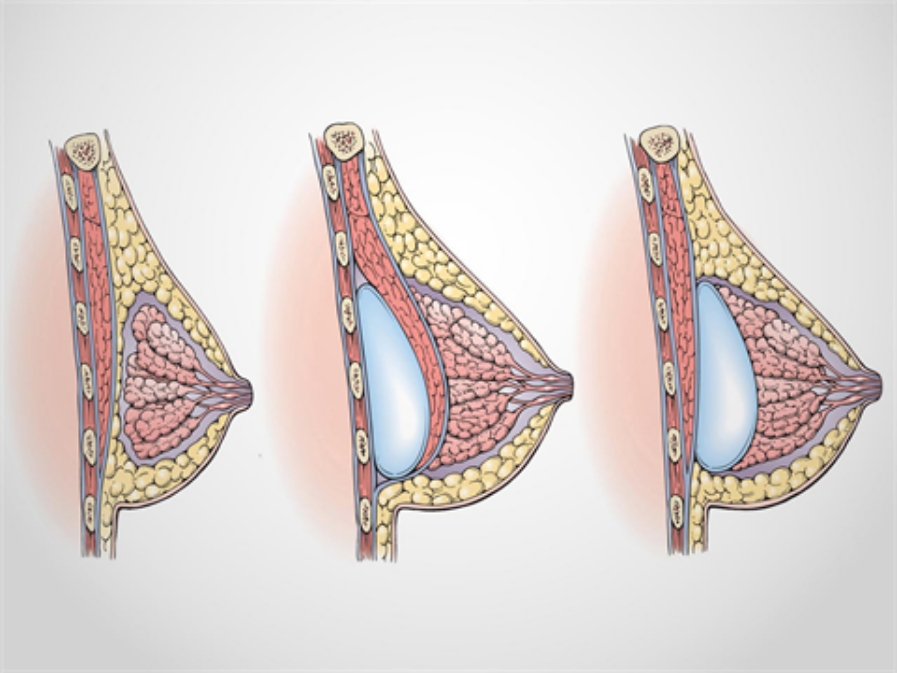
Breast Implant Placement and Shell Texture
When the implant is placed below the muscle, this lends itself to a more natural-appearing transition of the implant to the native breast, creating less of a “shelf-like” appearance. Although, there is more initial discomfort with this placement, advantages include a lower risk of visible rippling or wrinkling of the implant, decrease rate of scarring (capsular contracture) around the implant, and increased visibility during mammograms because of the technician’s ability to displace the implant from breast tissue.
When the implant is placed above the muscle, it is less painful, and therefore, recovery is faster and the appearance of the implanted breast matures more quickly. This method is advantageous for bodybuilders, where contraction of the pectoralis muscle has no bearing on the appearance of the augmented breast.
When the implant is placed below the muscle, this lends itself to a more natural-appearing transition of the implant to the native breast, creating less of a “shelf-like” appearance. Although, there is more initial discomfort with this placement, advantages include a lower risk of visible rippling or wrinkling of the implant, decrease rate of scarring (capsular contracture) around the implant, and increased visibility during mammograms because of the technician’s ability to displace the implant from breast tissue.
Breast Implant Incision Locations
The location of the incision is the one breast implant decision that will be largely determined by your surgeon. There are many incision locations possible, but the right placement for you will be determined by your current chest and the type of implant you choose. One of the most common incision sites is simply in the crease below the breast. The scar is very easy to hide and this area allows the surgeon ample space for any type of implant.
Dr. Parson varies his incisional approach depending on each individual. Each plastic surgeon has their preferred method for incision, but not one way is correct all of the time. If a patient does not require a lift, there are generally three ways the surgeon can make the incision:
- Trans-axillary (in the armpit)
- Inframammary (in the crease at the bottom fold of the breast)
- Areolar (in the pigmentation line of the areola and skin)
Each incision has its advantages and disadvantages. You and Dr. Parson will discuss all of these approaches and find the one that works best for you and your body.
In some cases, complementary surgeries such as a breast lift, fat transfer, or liposuction may be recommended along with breast augmentation. Your journey begins with a detailed consultation with Dr. Parson, where you will build a plan together to achieve beautiful, lasting results that you will love.
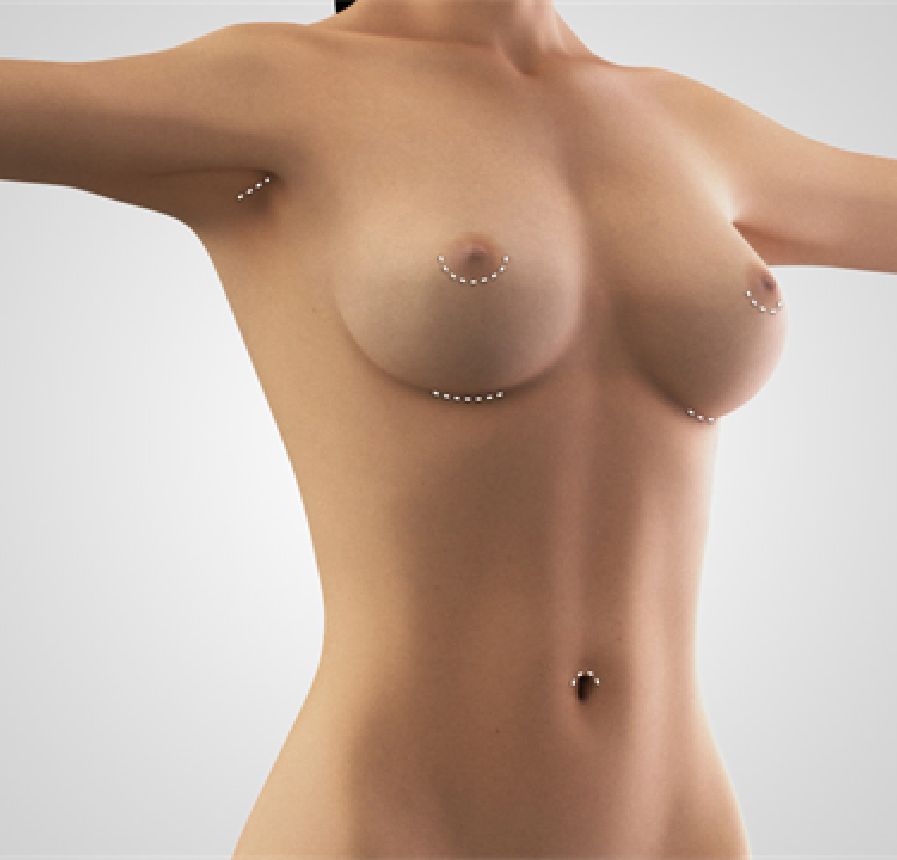
Breast Implant Incision Locations

The location of the incision is the one breast implant decision that will be largely determined by your surgeon. There are many incision locations possible, but the right placement for you will be determined by your current chest and the type of implant you choose. One of the most common incision sites is simply in the crease below the breast. The scar is very easy to hide and this area allows the surgeon ample space for any type of implant.
Dr. Parson varies his incisional approach depending on each individual. Each plastic surgeon has their preferred method for incision, but not one way is correct all of the time. If a patient does not require a lift, there are generally three ways the surgeon can make the incision:
- Trans-axillary (in the armpit)
- Inframammary (in the crease at the bottom fold of the breast)
- Areolar (in the pigmentation line of the areola and skin)
Each incision has its advantages and disadvantages. You and Dr. Parson will discuss all of these approaches and find the one that works best for you and your body.
In some cases, complementary surgeries such as a breast lift , fat transfer, or liposuction may be recommended along with breast augmentation. Your journey begins with a detailed consultation with Dr. Parson, where you will build a plan together to achieve beautiful, lasting results that you will love.
Dr. Parson
Meet Dr. Shaun Parson
Dr. Shaun Parson is a board certified plastic surgeon in Scottsdale, Arizona who specializes in breast implants. Breast augmentation is a comprehensive procedure that can help women gain the youthful contours they desire—or achieve the look they’ve always wanted. If you are unhappy with the appearance of your breasts and would like to learn more about breast augmentation, take a look at our FAQ and then contact our office to schedule a consultation.
Dr. Parson
Meet Dr. Shaun Parson
Dr. Shaun Parson is a board certified plastic surgeon in Scottsdale, Arizona who specializes in breast implants. Breast augmentation is a comprehensive procedure that can help women gain the youthful contours they desire—or achieve the look they’ve always wanted. If you are unhappy with the appearance of your breasts and would like to learn more about breast augmentation, take a look at our FAQ and then contact our office to schedule a consultation.
FAQs About Breast Augmentation
Breast augmentation is a comprehensive procedure that can help women gain the youthful contours they desire—or achieve the look they’ve always wanted. If you are unhappy with the appearance of your breasts and would like to learn more about breast augmentation, take a look at our FAQ and then contact our office to schedule a consultation.
Am I a good candidate for a breast augmentation?
Patients who desire more volume and a fuller breast size would be the right candidate for a breast augmentation here in Scottsdale, Arizona.
Some of our patients have already had an augmentation in the past and are now looking to replace their current implants with a smaller or larger size. Sometimes they are looking to replace their current implants because of age and/or wanting to switch from saline to silicone or vice versa this is referred to as a breast revision procedure.
How long does it take to recover from a breast augmentation?
Most patients report feeling better after a couple of days. You will leave the surgery center, located in Scottsdale, Arizona with a surgical bra that you will need to wear for the next 3 weeks. You can begin to work out in 3 weeks and are fully recovered by 6 weeks.
How much pain should I expect?
Some patients choose to use a pain pump which is a medical device that is inserted into the body during surgery. It will automatically dispense numbing medication into the body until it is removed around 2-3 days after surgery. While pain tolerance is different from patient to patient, most people are able to manage their pain with over-the-counter pain medication (such as ibuprofen and/or acetaminophen) after the first few days.
Will I have permanent scars after a breast augmentation? What will they look like?
Any surgery will cause a certain amount of permanent scarring. Breast augmentation surgeries have different scars depending on the type of incision used and if a breast lift is done in conjunction with the augmentation surgery.
Endoscopic breast augmentation leaves a small incision hidden under the armpits. Some patients opt for an inframammary incision which leaves a small scar under the breasts. Another option is a periareolar incision which leaves a small scar around the areolas. 1 week after surgery with Dr. Parson we recommend all of our patients use a combination of micropore tape and pharmaceutical grade scar recovery gel for the best results possible.
When can I go back to work after having a breast augmentation?
This depends on the patient and the type of work they are returning to. Most people who can work from home or have a desk/office job can go back to work in about a week. Patients report feeling tired more quickly when they first head back to work. If the work is more physical in nature, they usually will wait about 3 weeks to return.
Should I wait until I am done having children to have a breast augmentation?
Pregnancy and breast feeding usually cause the breasts to increase in size. While the implants themselves will not be affected, there is normally excess skin and increased breast ptosis than before they had children.
What should I expect for the first week after having a breast augmentation with Dr. Parson and beyond?
48 hours after surgery, the patient can shower. They will need to wear their surgical bra 24/7 for the first 3 weeks. After the first week, the surgical tape on their incisions will be removed and the patient can change their tape and begin to use scar gel at home. At 3 weeks, the patient can begin to work out again. They can do light cardio but will need to wait to run or do upper-body weight-lifting exercises until 6 weeks after surgery.
How soon can I drive after a breast augmentation performed by Dr. Parson?
Patients need to be completely off any narcotics or muscle relaxers before they can begin to drive again. Usually after a week, patients are able to go back to driving themselves independently again.

